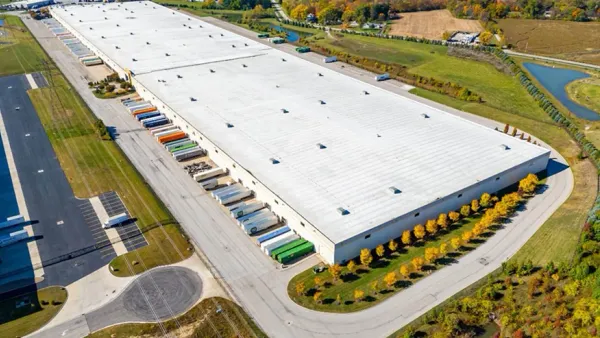Canadian wildfire smoke continues to blow over much of the U.S., raising air pollution to harmful levels for construction workers. Now, the impact of the fires is likely to raise U.S. lumber prices, too.
Canada’s 2023 wildfire season has been blazing, burning the largest amount of land ever recorded in a single year, said Marcy Nicholson, senior editor at Forest Economic Advisors, a Littleton, Massachusetts-based wood and timber product database, in a report on the Canadian wildfires.
“Unusually warm and dry conditions in many parts of [Canada] have provided fuel for blazes,” said Nicholson. “This has forced thousands of residents to evacuate, caused a scattering of mills to close temporarily and altered some harvest plans.”
By late June, with several months of wildfire season left to go, the burned area has already exceeded the full-year record made in 1995, according to Canadian Interagency Forest Fire Centre data. Canada’s typical wildfire season peaks in July and fizzles out by October, added Nicholson.
That’s bad news for contractors dependent on lumber availability and affordability. The reason why is that Canada supplies approximately 80% of U.S softwood lumber imports, according to Natural Resources Canada, the Canadian government department responsible for natural resources.
“The enormity of the fires has given lumber prices a boost, though it is too soon to estimate how much of the affected area includes harvestable timber and how much will catch fire in the months to come,” said Nicholson. “It is also too early to know how much of this will need to be quickly salvaged. Some of the largest wildfires are far north, limiting firefighting efforts and opportunities to utilize the burned timber.”
Lumber prices fell 10% in the past year, according to the latest Associated Builders and Contractors producer price index. That provided much-needed relief for contractors, as lumber prices skyrocketed at the onset of the pandemic and remain 26.5% higher than in February 2020.
After price drops for lumber in recent months, including a minimal 0.4% dip in June, economists expect that trajectory to reverse course again, said Mark Fergus, executive vice president of Cumming Group, a Seattle-based project management and cost consulting firm, in an email interview.
“Whilst the overall impact on resources is still being assessed, it is expected that the short-term impact of the wildfires will be to temporarily increase costs,” said Fergus. “The fires, combined with a drop in demand for residential properties resulting from current high costs, may result in a slight and temporary increase in lumber prices.”
Alberta and Quebec hardest hit
The Canadian provinces of Alberta in the west and Quebec in the east have been hardest hit thus far, with roughly 3.8 million acres and more than 3.5 million acres burnt, respectively, according to CIFFC data. Together, they represent more than 40% of Canada’s annual softwood lumber shipments.
That’s a massive hit on Canada’s softwood lumber production, softwood lumber shipments and timber harvest volume, said David Logan, senior economist at the National Association of Home Builders.
Through the first three months of 2023, Alberta and Quebec accounted for a combined 44% of total shipments and 45% of total production, said Logan. That means wildfires in those provinces are affecting a meaningful chunk of Canada’s harvest.
“Alberta’s share of pretty much any metric related to softwood lumber has been growing rather quickly in recent years,” said Logan. “If Alberta can’t get back to the trend it was on — whether by natural disaster or public policy — it would bode poorly for lumber prices.”
With several months of wildfire season remaining, Natural Resources Canada forecasts weather conditions to get worse before they turn better with the approach of winter later this year. NRC expects fire weather severity in July and August will be above average for the vast majority of Canada, said Nicholson.
“Weather conditions in Canada are on track to fuel more wildfires throughout the summer,” said Nicholson. “It’s a jaw-dropping forecast that, at times, paints a huge amount of the Canadian map red.”
















